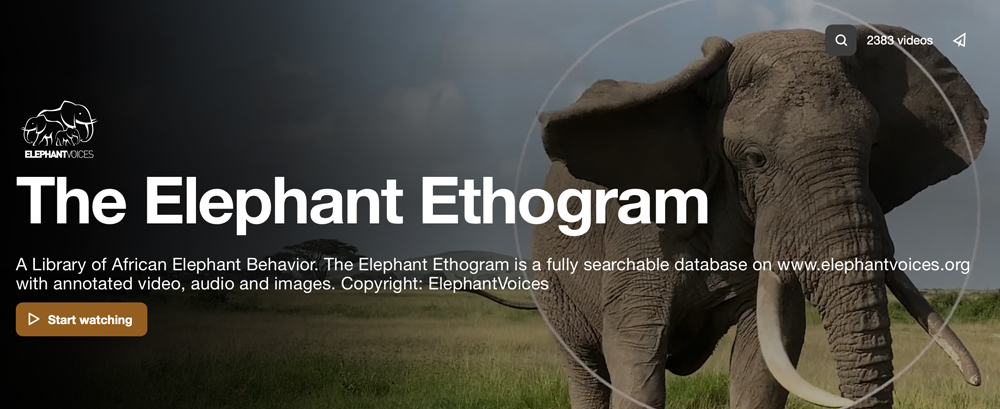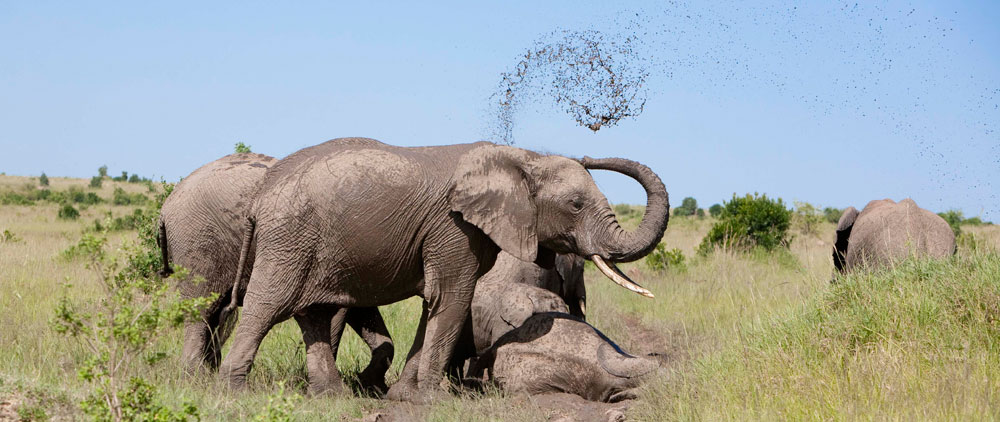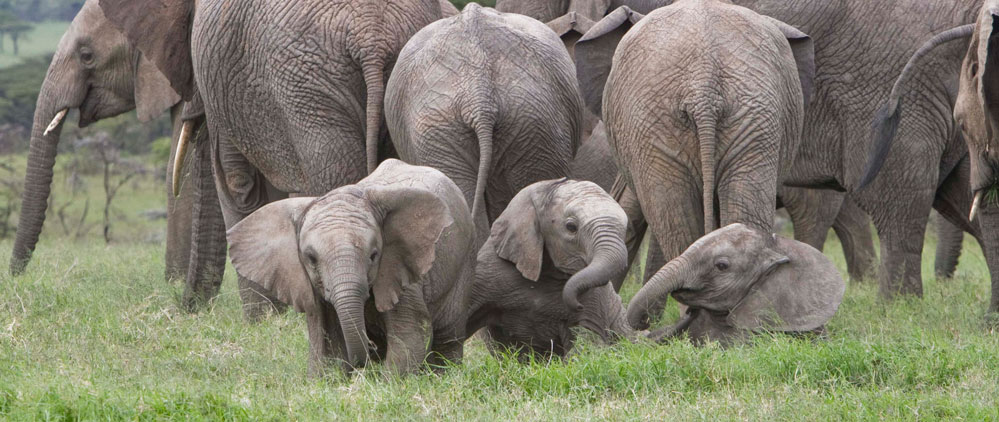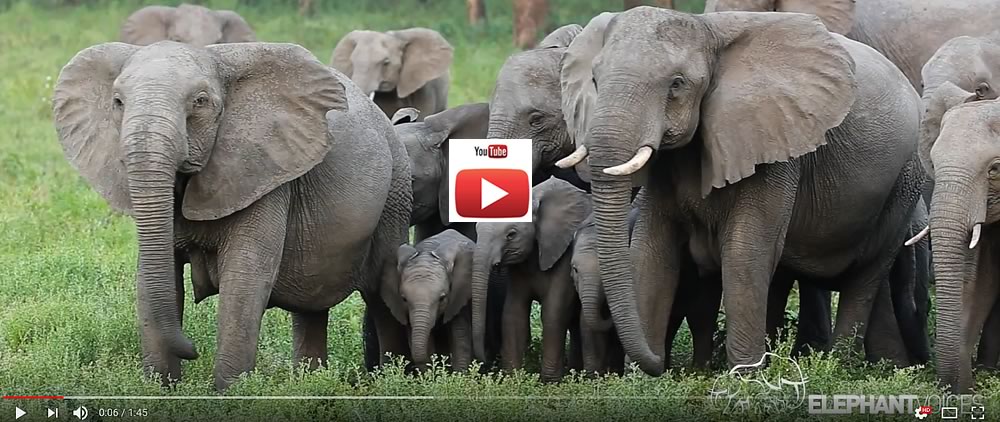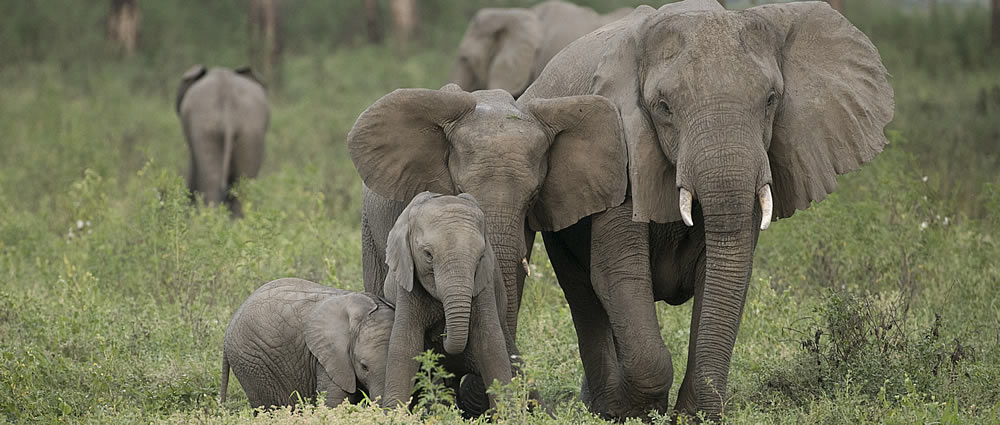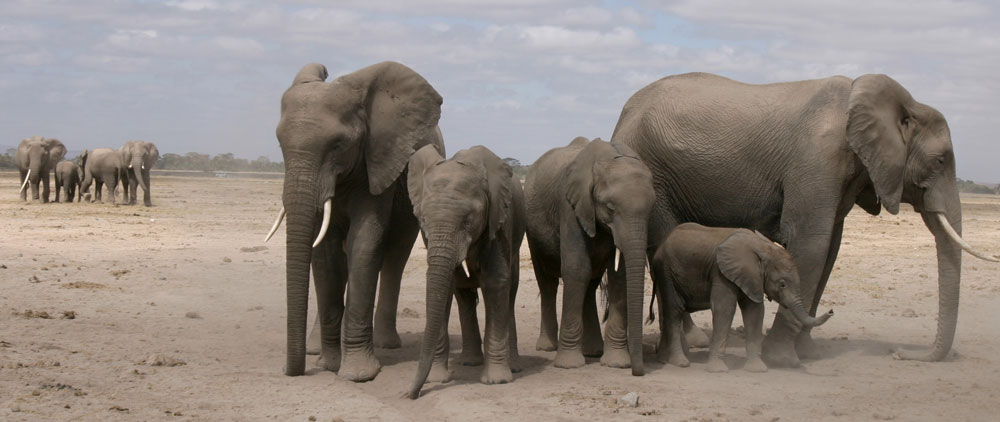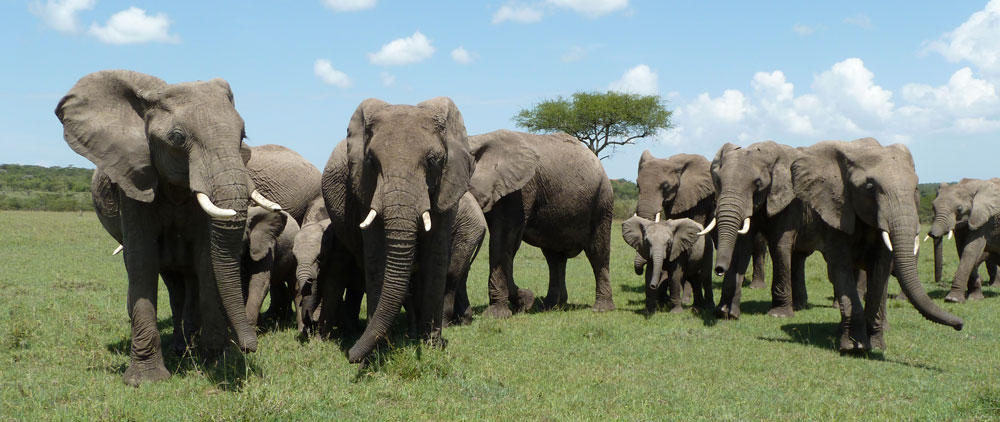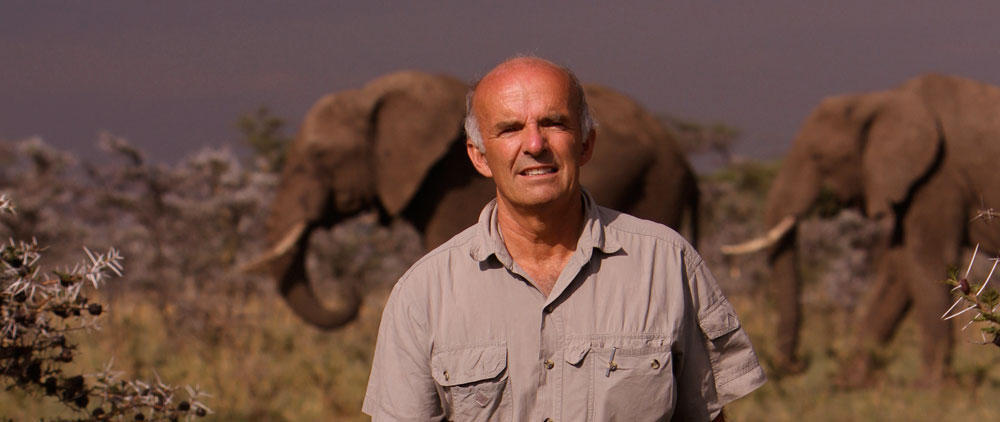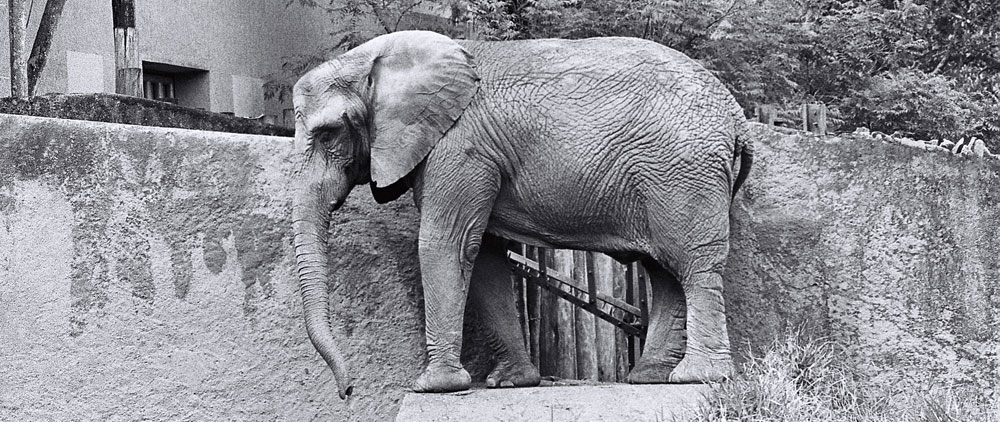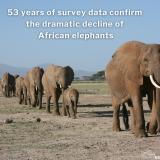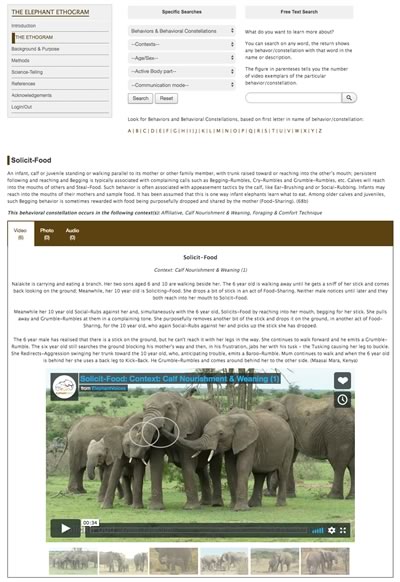elephant body language
-
How elephants communicate
Like all highly social mammals elephants have a well-developed system of communication that makes use of all of their senses - hearing, smell, vision and touch - including an exceptional ability to detect vibrations.
 Acoustic communication takes a look at sound production and hearing in elephants; chemical communication explains how elephants use various secretions and their acute sense of smell to communicate; visual communication looks at how elephants make use of postures and displays and their sense of sight in communication; tactile communication describes how elephants make use of their sense of touch to communicate.
Acoustic communication takes a look at sound production and hearing in elephants; chemical communication explains how elephants use various secretions and their acute sense of smell to communicate; visual communication looks at how elephants make use of postures and displays and their sense of sight in communication; tactile communication describes how elephants make use of their sense of touch to communicate.At one end of the spectrum elephants communicate by rubbing their bodies against one another, at the other end they may respond by moving toward the sounds of other elephants calling, perhaps 10 kilometers away. They convey information about their physiological (e.g. sexual/hormonal, body condition, identity) and emotional state (e.g. whether they are fearful, playful, joyful, angry, excited) as well as communicating specific "statements" about their intentions or desires. In this section we look at how elephants use the different pathways of communication and the actual mechanics of communicating.
You will in the fully searchable database The Elephant Ethogram: A Library of African Elephant Behavior find close to
-
The Elephant Ethogram
ElephantVoices is working on a major initiative to document the repertoire of African savannah elephant behavior (Loxodonta africana). The Elephant Ethogram represents a unique and comprehensive source of information about elephant behaviour and communication, based on ElephantVoices' decades of behavioural study, our multimedia photographic and acoustic collections, as well as footage collected during the filming of documentaries from the Maasai Mara, Kenya, and Gorongosa National Park, Mozambique. The Elephant Ethogram describes and preserves the gestural and acoustic "language" and behaviour of a species whose way of life, and very existence, is threatened by human greed and expansion.
The first version of The Elephant Ethogram was made available on ElephantVoices.org in April 2021.
Purpose & Objectives
The Elephant Ethogram documents in a unique, user-friendly and fully searchable database, the complex and diverse communication and behavior of African elephants for scientists and others to study, compare and share. As a repository of exemplars of elephant behaviour, The Elephant Ethogram aims to:
- preserve the gestural and acoustic repertoire, or "language," of African savannah elephants;
- be a valuable resource and reference for scientific study;
- be a repository of rare elephant behaviors and those evolving through social learning in response to rapidly increasing anthropogenic threats;
- inspire increased interest in elephant behavior,


